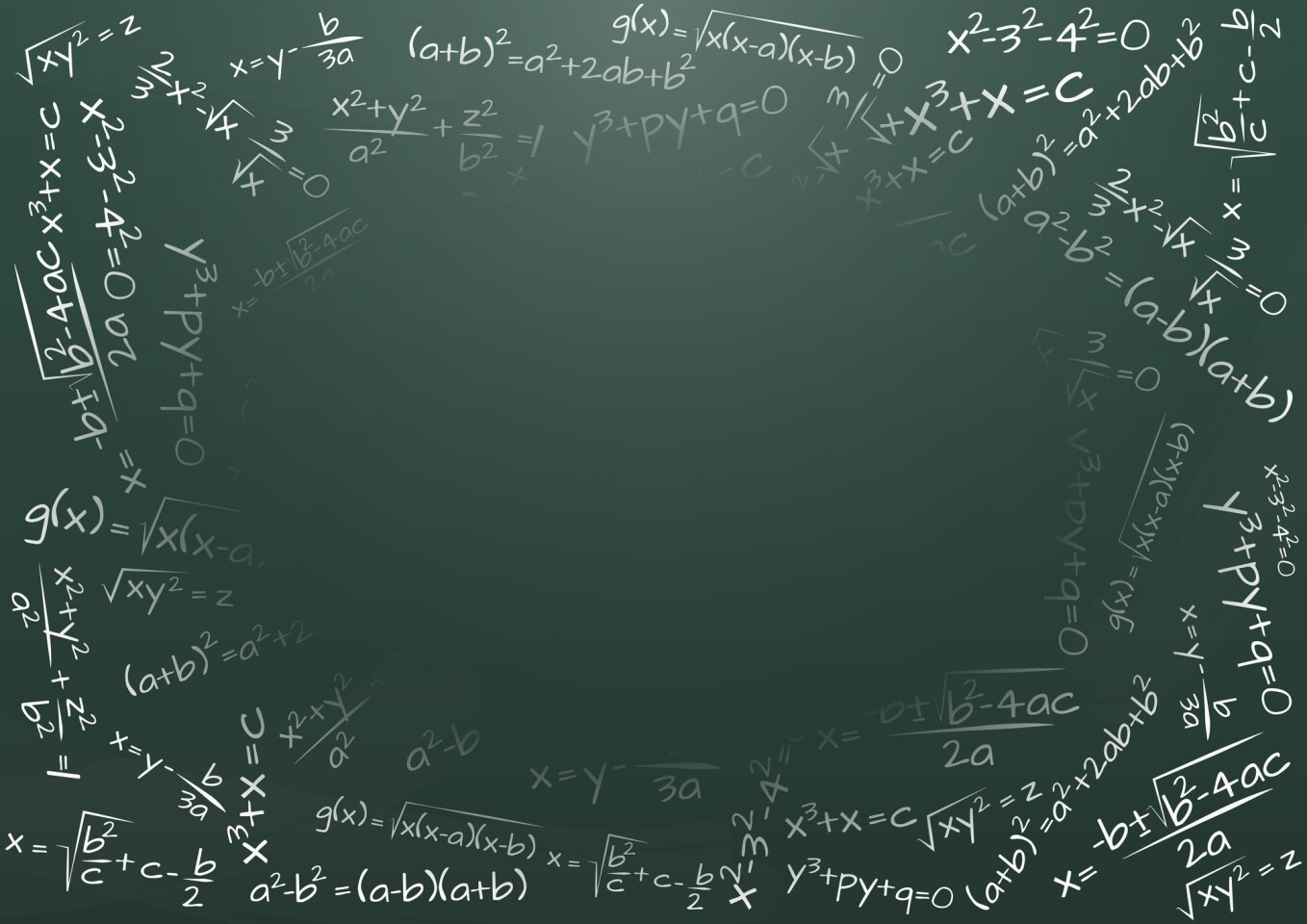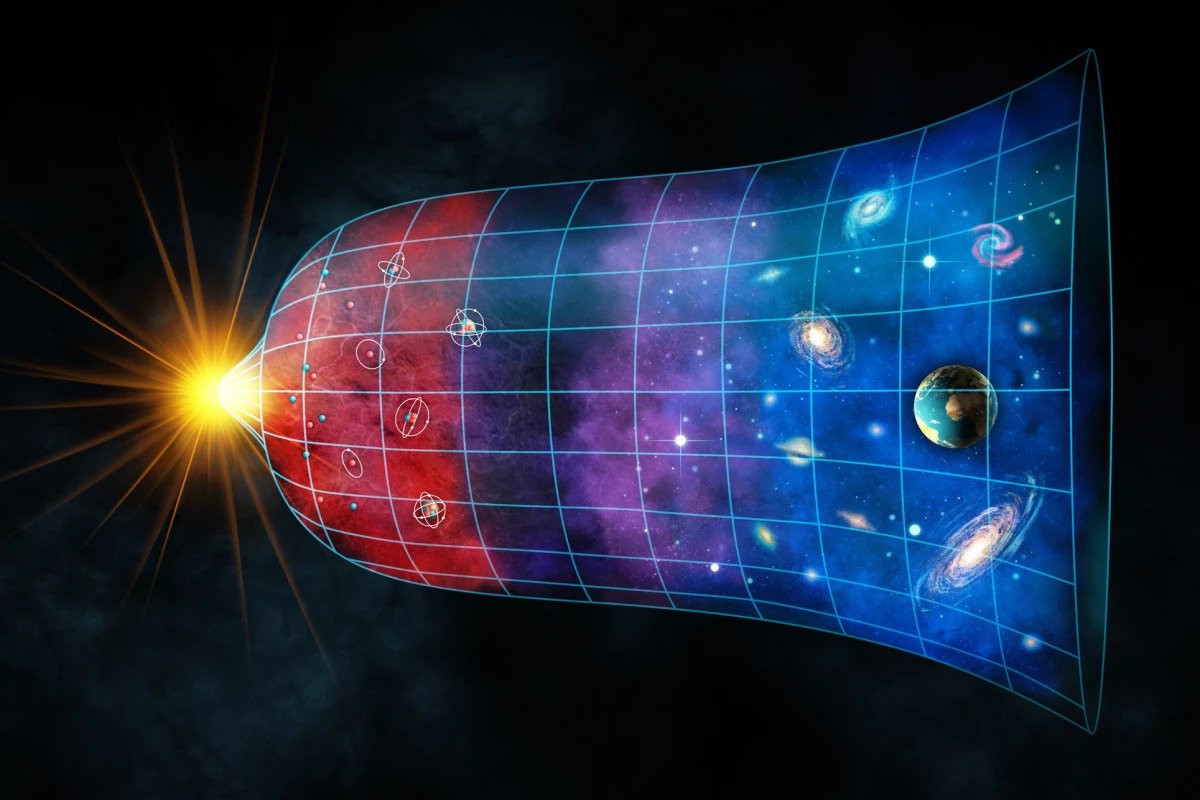While it’s almost impossible to directly detect, physicists have a few reasons to suspect dark energy exists. Measurements of the cosmic microwave background and observations of the large-scale structure of the universe both indicate that matter – both regular and dark together – can only account for around 30 percent of the contents of the universe. Some other form of energy has to make up the remaining 70 percent or so.
But if dark energy is so hard to study, how did we stumble onto it in the first place?
Dark history
The concept of dark energy can be traced back to none other than Albert Einstein – although he didn’t recognize it at the time. In 1917, while working on his theory of general relativity, Einstein hit upon a problem: his equations kept suggesting that the universe was dynamic, which ran counter to the accepted view at the time that the universe should be static.
To make his model fit contemporary beliefs, Einstein threw in a new number he called the “cosmological constant.” This worked to stabilize a static universe by saying that empty space itself has an intrinsic energy, which exerts negative pressure that pushes outwards, perfectly balancing against the inward pull of gravity.
But the idea didn’t hold up to scrutiny. In 1929 Edwin Hubble discovered that the further away a galaxy is from our own, the faster it’s moving away from us – a clear indication that the universe is expanding. Einstein would go on to say his “greatest blunder” was his refusal to accept what his own data was telling him about the universe being dynamic.
With the expanding universe becoming accepted science, physicists largely ignored the idea of the cosmological constant for the next 70 years or so. But the concept became relevant again in 1998, with the groundbreaking discovery that this expansion is accelerating.
Expansion speeds up
As light waves travel through space, the expansion of the universe stretches them out. That means their wavelengths become longer, changing the color of this light to appear more red – a phenomenon known as redshift. And in the late 1990s, two separate groups were using this effect to measure the rate at which the universe is expanding. Essentially, the redshift of an object reveals how much the universe has expanded since the light left the object.
Both groups were studying type Ia supernovae, extremely dependable light sources that have very close to the exact same brightness every time. As such, they’re often referred to as “standard candles,” and astronomers use them to calculate distances to objects by measuring their apparent brightness in the sky. The astronomers then compared the distance and redshift of these supernovae, to measure their recessional velocity – how fast they’re moving away from us.
The scientists expected to confirm the leading hypothesis of the time – that gravity would be slowing down the expansion of the universe, so things further away from us would be receding more slowly than closer objects. But to their complete surprise, they found the exact opposite to be true. The find has been backed up by many independent studies since.
For completely changing the face of astrophysics, three scientists from the two teams – Saul Perlmutter, Brian Schmidt and Adam Riess – were awarded the 2011 Nobel Prize in Physics.
Dark energy models

So the evidence points towards something causing the universe to expand at an accelerating pace. But what actually is dark energy? Astrophysicists have proposed a range of possible models that could explain the phenomenon.
The first and by far simplest explanation is Einstein’s cosmological constant. The idea fell out of favor after the discovery that the universe was expanding, and for decades it was given a value of zero to tuck it out of the way – but if it’s given a nonzero value it could actually account for an accelerating expansion.
Nowadays the cosmological constant is often referred to as vacuum energy. It’s driven by a bizarre cycle where quantum fluctuations produce pairs of “virtual” particles and antiparticles that spontaneously pop into existence out of nothing. They only last very briefly, however, before they annihilate each other in a burst of energy. And it’s this energy that pushes on space itself, driving the universe to expand ever faster.
Another model suggests that this energy doesn’t have to be “constant” over time – that’s the essence of quintessence, which has been proposed as a fifth fundamental force and dark energy candidate. Quintessence could be either an attractive or repulsive force at different periods of time, but models suggest it would have become repulsive around 10 billion years ago, driving the accelerated expansion we see today.
Other models try to explain both dark energy and dark matter with one sweeping hypothesis. In one recent study, physicists propose that dark matter could be made up of multiple types of particles – there are many types of regular matter, after all. If dark matter happens to decay into lighter particles, its gravitational pull would shrink over time, loosening its grip on the expansion of the universe and allowing it to speed up.
In another, scientists simulated what would happen if dark matter had some repellent magnetic properties. And sure enough, the expansion of the universe accelerated in a similar way to what we see today, suggesting dark energy could be a symptom of dark matter.
Other scientists suggest that both phenomena are produced by a “dark fluid” that fills the universe. This fluid would have negative mass, meaning its gravity essentially works in reverse, repelling other masses. That not only explains the accelerated expansion of the universe (dark energy), but it means galaxies would be held together by a “pushing” force from outside, rather than the pulling force of clumps of dark matter in their center.
Another fringe hypothesis proposes the idea of objects made of dark energy itself. These General Objects of Dark Energy (GEODEs) would look a lot like black holes, except they repel instead of attract. They would migrate into cosmic voids, away from most matter, and if they’re spinning very quickly they would repel each other with such force as to accelerate the expansion of the universe.
But the problem with almost all of these hypotheses is that as soon as you start making tweaks to the ΛCDM model, other implications threaten to unravel the whole thing. So it begs the question – are our models wrong? Does dark energy exist at all? Or is it just a cosmic miscalculation?
Alternatives

As a hypothesis, dark energy is rather ad hoc – it plugs a gap in our understanding, but in doing so it raises more questions. Therefore it’s not surprising that many scientists question its validity, and propose alternative explanations for the acceleration – or just the appearance of acceleration.
Betting against Einstein is often a fool’s game, but perhaps in this case his equations aren’t completely correct. Some astrophysicists propose that modifying our theory of gravity would remove the hole that dark energy was invented to fill.
Three out of the universe’s four fundamental forces work through “carrier” particles, so it’s not a stretch to predict that the fourth also has its own particle. The final force is gravity, and its hypothetical carrier particle has been dubbed the “graviton.” If the graviton exists and has a mass, then it could change the way general relativity works on huge cosmic scales, causing expansion to accelerate.
Others suggest that general relativity oversimplifies things, and it’s through these shortcuts that the need for dark energy arises. Different densities of matter in the universe should bend spacetime in different directions – galaxies and clusters should bend it one way, and voids should bend it the other. That could warp light from distant objects and mess with our measurements of their age or distance, giving the impression of an accelerating expansion.
A variation on that idea, called timescape cosmology, suggests that this warping would also change the rate at which time passes by as much as 38 percent between different densities. So the supernovae that the original dark energy astronomers saw looked further away than they actually are, because time is passing at different speeds within our line of sight to them.
Another theory describes “Tardis” regions of spacetime that, like the namesake time machine, are bigger on the inside than they appear from the outside. That’s caused by different speeds of expansion in different parts of the universe. Again, light from distant objects would stretch further as it passes through these Tardis regions – and because the light passes through more of them when the source is further away, that gives the impression that expansion accelerates with time.
However, as intriguing as these ideas may be, no alternative hypothesis is yet to explain everything quite as neatly as dark energy, so it’s generally considered the best explanation we have – despite being so difficult to pin down.
So if the universe is expanding at an accelerated rate, what does that mean for the ultimate fate of everything? There are a few possibilities.
Dark future

Projecting the various dark energy theories into the future, the universe could be in for a suitably dark end.
If the expansion keeps accelerating, eventually all the galaxies in the sky would vanish from view. That’s because at a certain point, they’d be moving away from us faster than the light they emit would travel towards us, ensuring that this light could never, ever reach us.
Dark energy would continue pushing the universe apart long after every last star has collapsed into a black hole, and every last black hole has evaporated into nothing. Eventually all particles would be spread so far apart that they would rarely meet. The universe would cool down until it has absolutely no thermodynamic free energy. This is known as the Big Freeze.
Different models have different endings. “Phantom energy” is a variation on quintessence, where its density actually increases as the universe expands (as opposed to most models of dark energy where the density stays constant). That means that eventually, this phantom energy will end up overpowering all other fundamental forces in physics.
In this scenario, at some point gravity would become too weak to hold galaxies together. A few dozen million years later and the strong and weak nuclear forces begin to fail, tearing apart stars and planets, and then atoms themselves. Finally, even the fabric of spacetime will rip apart, in an end fittingly called the Big Rip.
Or, if dark energy isn’t constant over time, there’s a chance that in the distant future gravity could win the tug-o’-war and begin pulling everything back together. Over billions of years, the universe would contract until it reaches a point of infinite density, like a reverse Big Bang. This scenario is called the Big Crunch.
Or perhaps, that isn’t the end but a new beginning, as another universe explodes out of the ashes in a so-called Big Bounce.
Experimental confirmation
Given how intangible dark energy is, how could we ever directly detect it? A few experiments have tried to find evidence of dark energy at work through a fifth fundamental force.
One tested the idea that dark energy’s influence is stronger in a vacuum. Scientists in the UK placed a metal marble in a vacuum chamber, then dropped atoms around it. If a fifth forces was at play between the two weights, then the path of the atom should bend slightly on its way down.
In another study, scientists at CERN investigated the existence of “chameleon” particles, a dark energy candidate that would have different masses and gravitational influence based on how much matter was around them. The team studied a mirror, made to be sensitive to the particles if they exist, for extremely small movements that they might cause.
In all experiments so far, scientists have come up empty. That could rule out certain masses of dark energy particles or interactions of the force – or, it could mean that we’re on the completely wrong track.
Dark energy will likely remain one of the deepest mysteries of cosmology for quite some time, but we may have new leads soon. The Dark Energy Survey has been scanning the skies since 2013, while the Dark Energy Spectroscopic Instrument (DESI) recently joined it. Those, as well as others like the Sloan Digital Sky Survey, will help produce 3D maps of the cosmos to probe the physics of dark energy.
Scientists will no doubt continue to investigate and try to find evidence of dark energy in action, or perhaps a brand new theory will arise that erases the need for it entirely. However it plays out, it’s a fascinating area to watch.

















Please keep comments to less than 150 words. No abusive material or spam will be published.
Their research showed that remote supernovae are 10% to 25% dimmer and therefore further away than expected as compared to the nearby (local) supernovae.
Standard luminosities of type Ia supernovae helped the researchers to determine their distances, while the observed redshifts provided an estimate of their recession velocities – the relation between redshift and distance helped the researchers to determine the expansion rate (km/s/Mpc) of the Universe.
Remote measurement yields an expansion rate of 46 km/s/Mpc (Blanchard et al. 2003) which is much lower than the local measurement of 72 km/s/Mpc by the Hubble Key Project (Freedman et al.).
The expansion rate (km/s/Mpc) for remote supernovae is lower than the expansion rate for local supernovae, therefore, we say that the Universe is accelerating now and had a slower expansion in the past.
Working on research made me analyze the data. The peer-reviewed paper presents a novel interpretation of the redshift-distance relationship of observed supernovae as reported by the scientific reviewer of one of the most prestigious astronomy journals.
I believe accelerating Universe is a surprising discovery due to an undiscovered aspect.
https://www.researchgate.net/publication/343484700
Space is rather liken to a rubber sheet AND not like a board laid out flat it twists and turns!!!